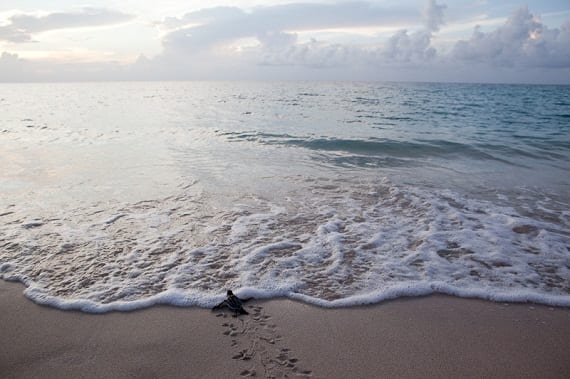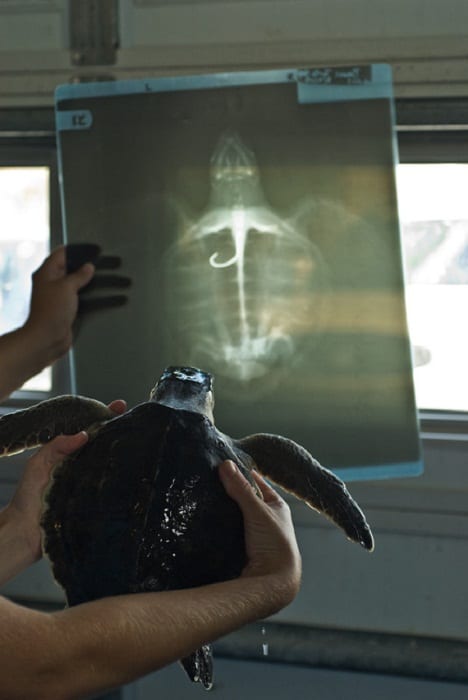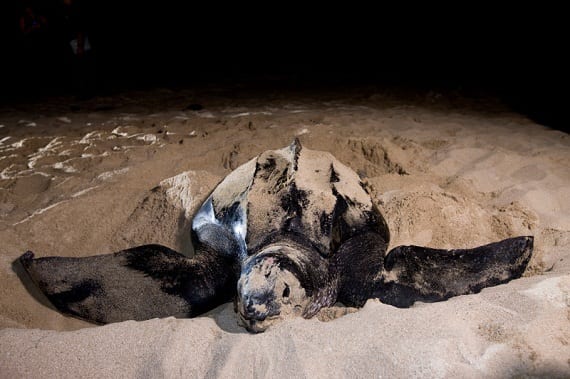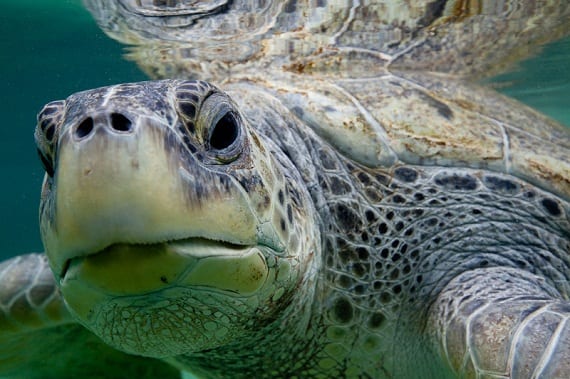June 16, 2014
Photos: Help Save Sea Turtles with These Five Simple Steps
Of the seven sea turtle species in the world, six nest in the United States, and all of them are listed as endangered or threatened under the Endangered Species Act — harmed by bycatch, marine debris, boat strikes, pollution, and many more threats. Take a look at a few simple yet important steps that you can take during your beach days to protect sea turtles.
1. Minimize beach lighting. The moon’s natural lighting guides sea turtle hatchlings and nesting females, so walking on the beach at night with flashlights or leaving on beach house lighting can disorient turtles. Turn off your exterior lighting, keep blinds shut, and place red cellophane on flashlights when walking on the beach at night.

A Loggerhead sea turtle heads back to the ocean after nesting on Bald Head Island, North Carolina in 2009. (Photo: Oceana / Jeff Janowski)
2. Avoid beach fires during the nesting season. The light and heat from beach fires can disorient sea turtles, causing them to crawl towards the fire. It’s also important to remove recreational equipment from the beach at night, since sea turtles can get stuck in the equipment.

A Leatherback sea turtle enters the ocean for the first time after hatching from its nest in the U.S. Virgin Islands (Photo: Oceana / Tim Calver)
3. Keep beaches and waterways free of trash! Plastic bags are a particular threat, since sea turtles can mistake them for jellyfish — one of their main prey sources — causing them to starve or die. Additionally, since turtles can choke or become entangled in fishing gear like nets and hooks, as pictured below.

A sea turtle with a fishing hook in its esophagus, rescued by the Karen Beasley Sea Turtle Hospital in Topsail Island, North Carolina. (Photo: Oceana / Cory Wilson)
4. Don’t disturb nesting females. Sea turtles can get easily spooked when they’re starting the nesting process, sometimes causing them to “false crawl” and return to sea without nesting.

A Leatherback sea turtle laying her nest in the U.S. Virgin Islands. (Photo: Oceana / Tim Calver)
5. Stay alert when boating. Boat and propeller strikes can seriously injure or kill sea turtles, so to avoid these incidents, slow down when you spot a turtle, stay in channels, and avoid boating over their habitat like sea grass beds.

A Loggerhead sea turtle swimming in the Rivera Maya in Mexico. (Photo: Oceana / Tim Calver)
Oceana works to protect sea turtles around the planet, campaigning to protect their habitat, reduce sea turtle bycatch from industrial fisheries, and combat poaching. Learn more about our efforts here.
MOST RECENT
September 3, 2025
Air Raid Panic to Informed Skies and Seas: The National Weather Service in a Nutshell
August 29, 2025
August 22, 2025
Corals, Community, and Celebration: Oceana Goes to Salmonfest!



